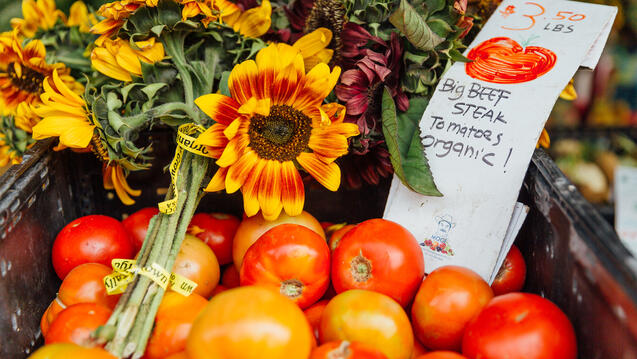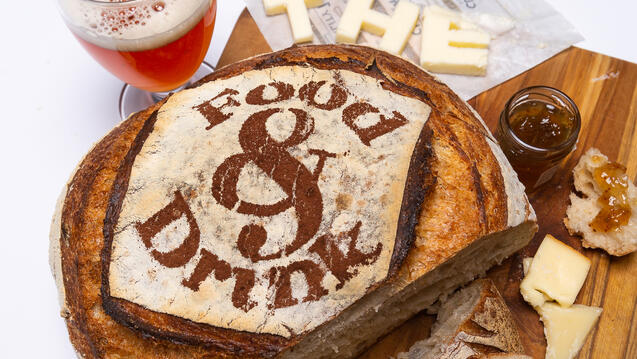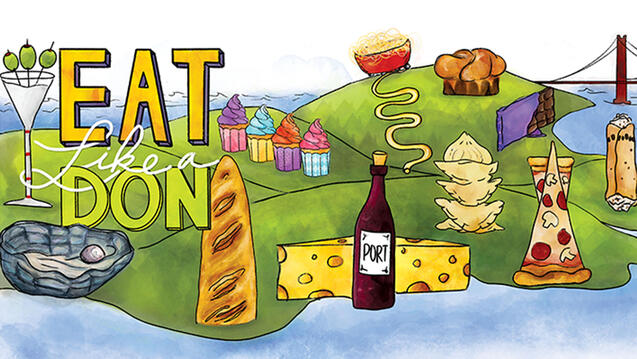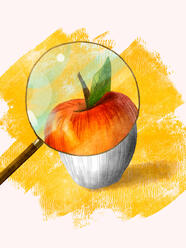
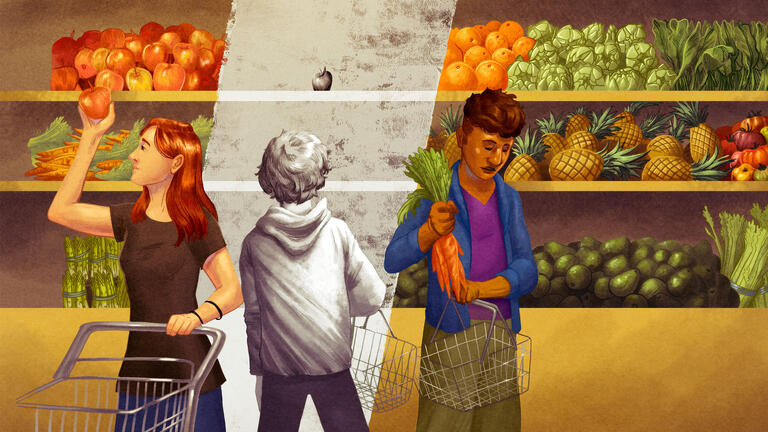
Food as Justice
In San Francisco, land of the $3 croissant and the $12 burrito, it’s easy to forget that for some people, food isn’t a given. It’s a hope.
This issue of hunger is at the heart of projects, both practice and research, at the University of San Francisco.
“If we’re talking about our Jesuit identity, part of that is helping those who are most in need,” says Shannon Gary, USF associate vice provost of student life and dean of students.
Last year, Gary led the effort to establish a food pantry right here on campus. And in many classes at USF, faculty and students are working to address hunger on a global scale.
Researching Food and Hunger
Research on food security — and food insecurity — has taken Brian Dowd-Uribe, assistant professor of international studies, across the globe, including to Costa Rica and West Africa. He studies the sociology of food systems. Who gains and who loses from different interventions to address food and farm security? Do genetically engineered foods benefit small farmers? Do these new food technologies promote greater food and farm security?
He weaves in those experiences while teaching classes focused on food.

“Students are really motivated by issues of food,” Dowd-Uribe says. “Food issues intersect with social issues in dynamic ways. It’s not just about potatoes and corn. It’s about the social processes that are connected to the growing of food, the processing of it, the transportation of it, and the eating of those foods.”
In his classes, Dowd-Uribe uses food as a way to talk about justice. “Food immediately opens up all these really interesting questions,” he says. “How can we as a country produce so much food yet have such hunger?”
Putting Research into Practice
Students in the Community Garden Outreach class explore similar questions as they learn about food production and how to provide food to communities that need it. On average, three sections of the class are offered each semester — and they always fill up.
Melinda Stone, associate professor of environmental studies, takes her Community Garden Outreach students to Bolinas each week. They meet with local farmers, visit USF’s Star Route Farms and other local farms, and learn to gather produce that would otherwise go to waste. They prepare this produce in the kitchen at the Bolinas Community Center and in the outdoor oven at Bolinas Park. All meals they create are served for free in the park, for all who gather.
Food issues intersect with social issues in dynamic ways. It’s not just about potatoes and corn. It’s about the social processes that are connected to the growing of food...
Nationwide, between 30 and 40 percent of food goes to waste, Stone says.
“Food is a human right and in a place where there’s so much abundance, it seems really problematic that some don’t have enough to eat,” Stone says. “This class definitely empowers students and puts them in a place where they’re part of a creative endeavor to make a difference in this regard. It is a living project.”
Two years ago, Dowd-Uribe’s students conducted the first food security survey of USF students. Last year, they researched how other universities have tackled food insecurity and proposed a new program for students to donate leftover credits on their meal plans to students who need it.
While that idea is still being explored — students pitched it to administrators last year — the university has opened the food pantry to help feed students who aren’t sure where their next meal is coming from.
Serving USF’s Mission
Located in Gleeson Library and open twice a month, the pantry is stocked with shelf-stable groceries such as cereal, almond milk, beans, and applesauce. The pantry is free to all students.
The food pantry is “part of our ethical obligation and moral obligation — if we have students who we know are hungry, we try to do what we can to help alleviate that,” Shannon Gary said. “This is just as important as providing them with computers or with a writing center. This is just another piece of the puzzle that’s going to help them be successful.”
Food pantries are increasingly common at universities across the nation. The College and University Food Bank Alliance includes more than 700 colleges and universities. Nearly 44 percent of students cite food insecurity at four-year universities, according to 2019 research by Temple University. Nearly half of students could not afford to eat balanced meals.
The idea for USF’s pantry first came about after three students within a few months reached out to Gary’s office seeking emergency funds to purchase food. If that many students sought help, Gary thought, surely more students also needed the help but didn’t ask for it. He pitched the idea of a food pantry and quickly gained university support.
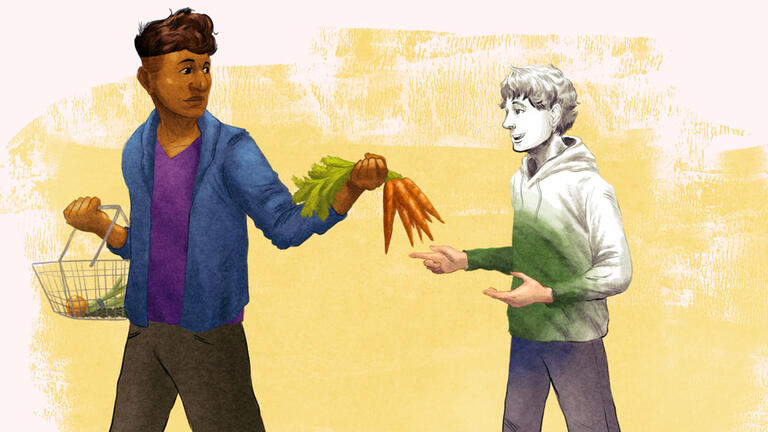
In its first year, the pantry had more than 460 visits from students, including first-years through graduate students. The number, Gary said, was more than he expected.
Among the visitors was Jared T. Ross, a sophomore majoring in entrepreneurship and innovation. Ross first learned of the pantry through a class announcement, and he realized it could help ease his food worries.
As a student living on campus, Ross had a meal plan, but he didn’t have enough points to cover every meal. He sometimes skipped meals to stretch his points. Now the food pantry helps him fill the gaps.
“Without a doubt,” says Ross, “it has given me a lot of breathing room in terms of not worrying about what I would be eating in the next two weeks or so.”
Fruit of the Vine
By Andrea Calderón ’19
In late summer, tomato vines get wrinkled and sticky. The essential oil on the stems coats my fingers a brownish green. I scour the rows, picking the fruit. The Central Valley sun shines so bright, I can feel my skin crackle like the chicharrón we ate for lunch.
Our jeep is parked on the side of the road in the shade of a tree. I look at the buckets we’ve filled and loaded into the back. My parents’ friends who work on farms outside Sacramento have called to let us know the season has come to a close. Thanks to them, we can comb through this field for free.
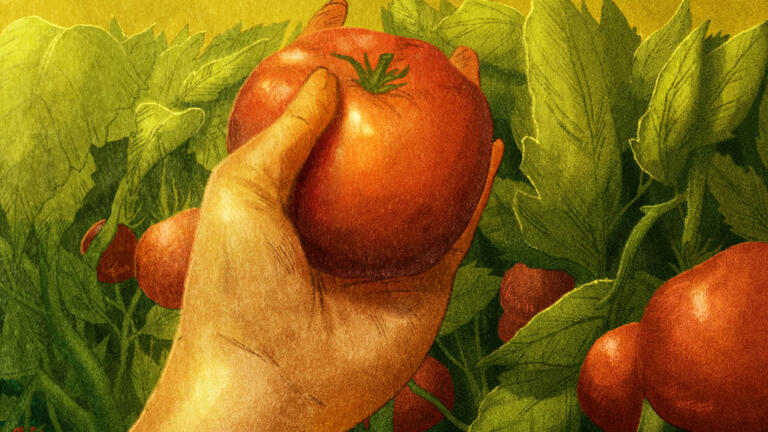
These tomatoes have so much more life than those we find at the Albertsons near our house. We rinse them under the spout of our orange beverage cooler. I bite the red flesh. I add a sprinkle of salt. Nothing tastes better than this.
In Michoacán, my parents were city kids fortunate enough to receive a formal education. When I ask how they learned to harvest, they laugh, insisting it’s common sense. They teach me everything but leave so much unsaid, like the fact that I’m lucky to be out in this field for fun. Mostly, they parent the way their parents did, with many silences and few explanations. They love me fiercely. The rest, I have to glean for myself.
Andrea Calderón used to cook for a living. Now she’s an accounting major, and she graduates in December 2019.
